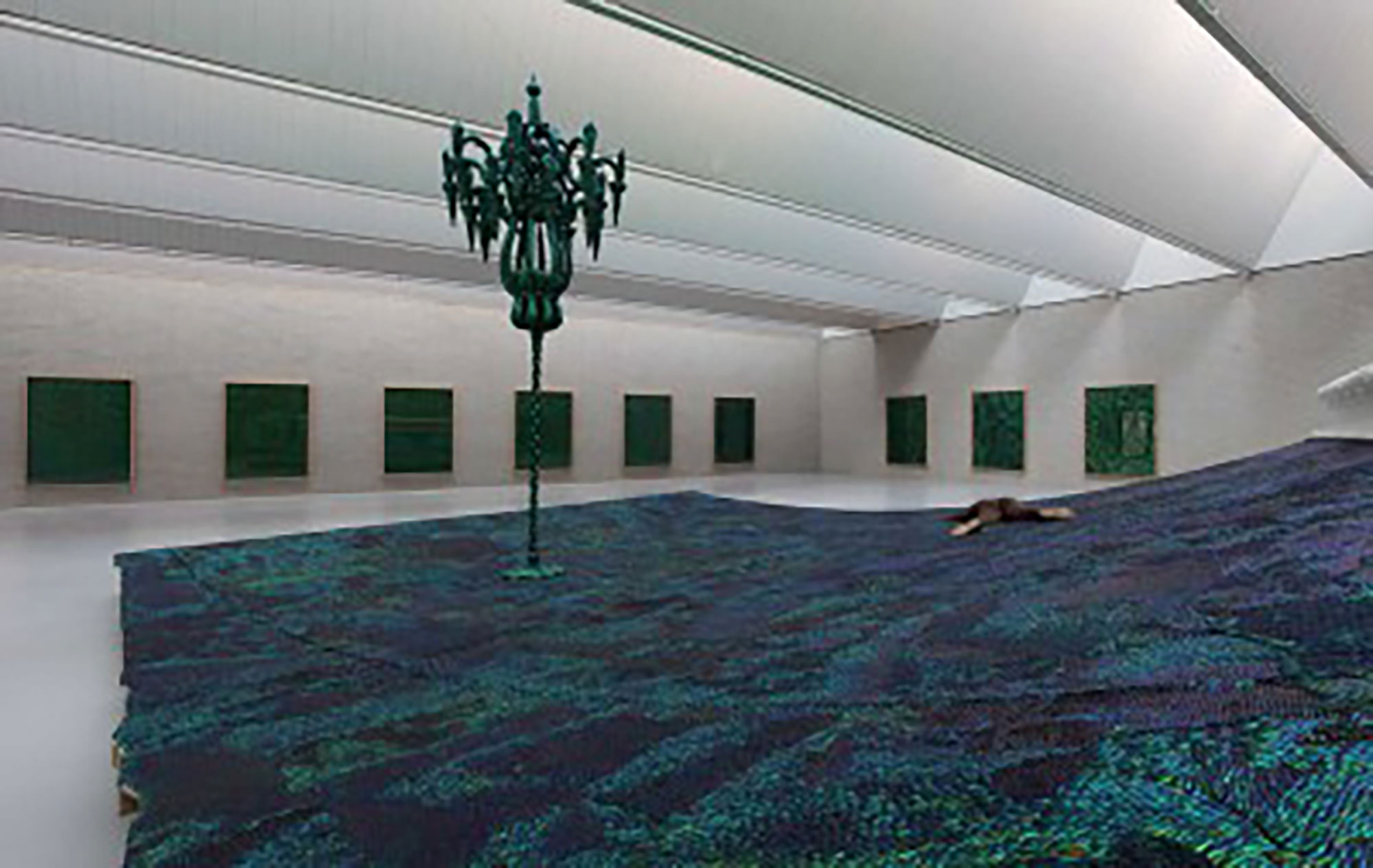

Hortus/Corpus: a major exhibition in the Kröller-Müller Museum on and with Belgian artist Jan Fabre (Antwerp 1958). The title, which consists of the simple words, garden (hortus) and body (corpus), derives from the universe of Jan Fabre. The insect, the human, the angel and the blue of the perpetually recurring moment at which night becomes day and life awakens, play an important role therein. They are the four basic elements with which Fabre composes and reveals to us, in ever-altering arrays, his thoughts on life and death, beauty and disgust, vulnerability and violence, mortality and eternity.
With his sculptures, videos and drawings in the exhibition spaces and corridors and with no fewer than five installations in the sculpture garden, Jan Fabre briefly makes the Kröller-Müller Museum his own personal domain. The emphasis here is on the human body; on the physical and the capacity for depleting and recharging energies.The man who measures the clouds (1998) is the first sculpture by Fabre that visitors to the exhibition encounter, while walking on the path through the front garden of the museum towards the entrance. On the right, a human figure stands on a small stepladder, perched on the edge of the museum’s roof. The man measures the clouds with a ruler. For Fabre, he symbolizes that which an artist does: balancing on the border between the possible and impossible.
Jan Fabre is internationally renowned as one of today’s most original and versatile artists. He has been making his name as a groundbreaking performance artist for over 25 years already. This basis provides the source for his plays and operas on the one hand, and his sculptural work on the other. The Kröller-Müller Museum is hosting Jan Fabre as a visual artist.
“Jan Fabre has intentionally chosen the physical, exuberant aspect of his work in order to contrast the baroque, Catholic, Flemish with the Calvinistic, Spinozian character of this northern museum. If you wish, Fabre’s work can be linked to classical themes and traditions in art and many substantial similarities can be indicated. The paradox always remains and challenges one to find new interpretations and insights. Fabre’s frankness, courage, brutality, his free use of conventions, combined with his erudition, life experience and talent are a guarantee of visual challenges and provide nourishment for the soul.”
Evert van Straaten (director Kröller-Müllermuseum)

